RMAF 2015 Page 3
Besides all the good music and audio equipment at RMAF, the most important thing I think we have a tendency to take for granted are people we get the rare chance to see and greet. Folks like…
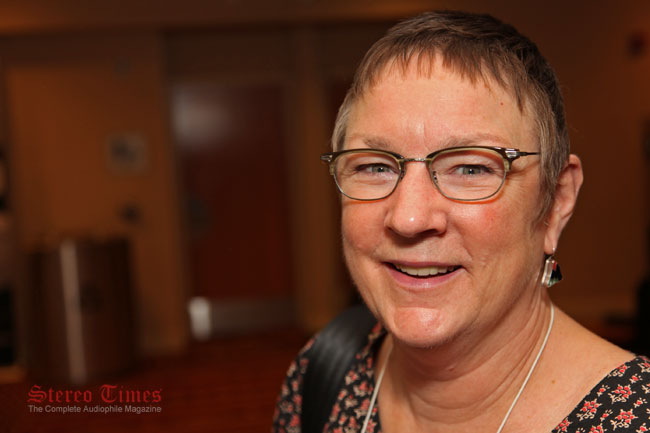
Janice Mancuso of Reference Recordings
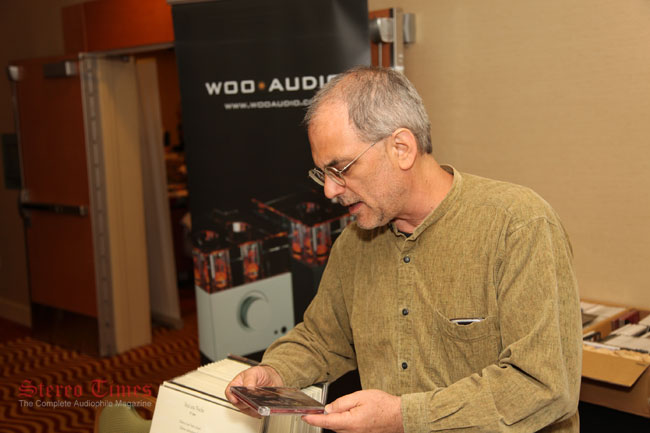
Todd Garfinkle of MA Records

Jeff Wells (left) of Wells Audio
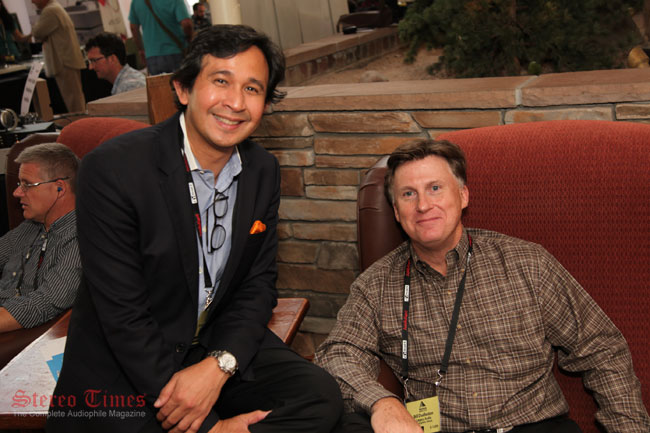
Tweak Studio’s Arnold Martinez (left) and Bill Dudleston of Legacy Audio
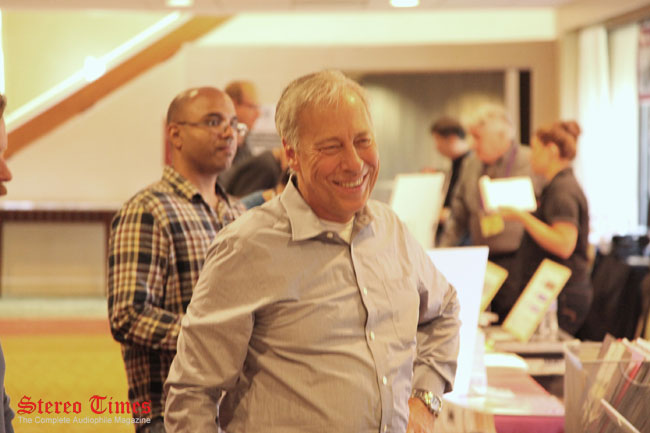
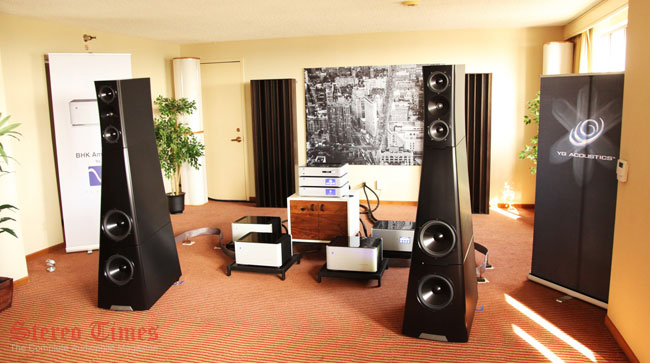
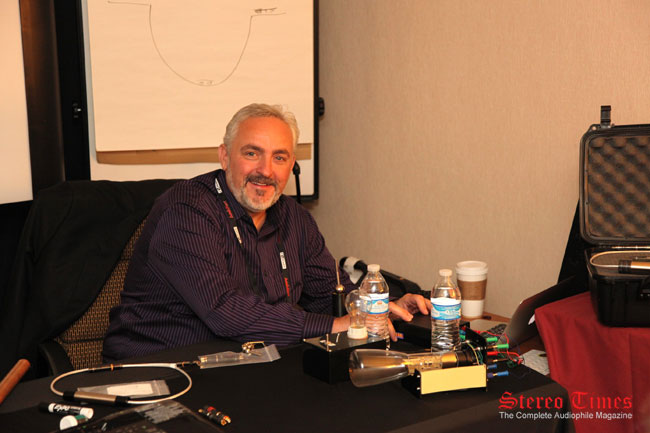
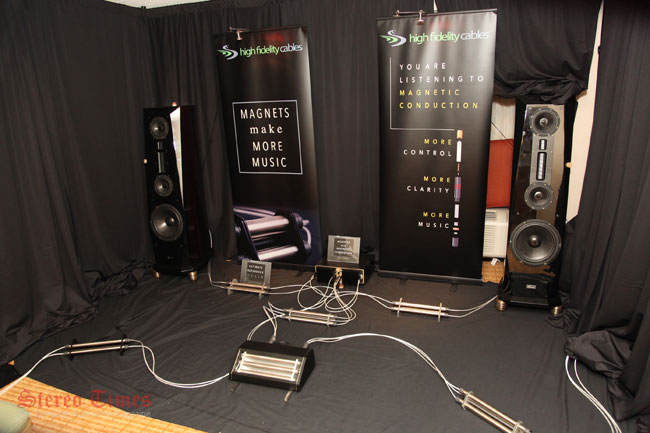


Joe Jurzec of Purity Audio Designs and Bill Artope of Dynamic Design delivered stellar sound at this year’s RMAF!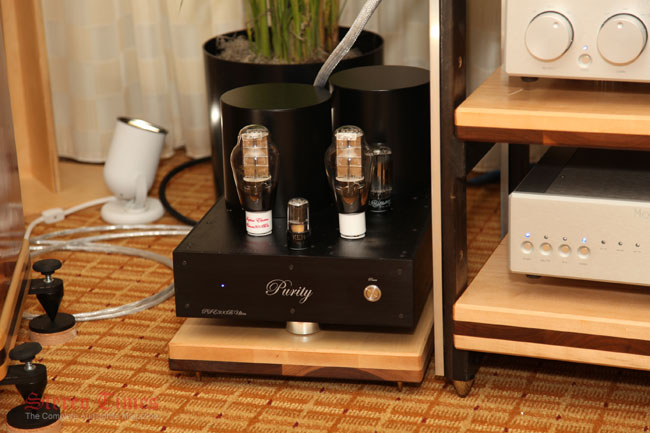
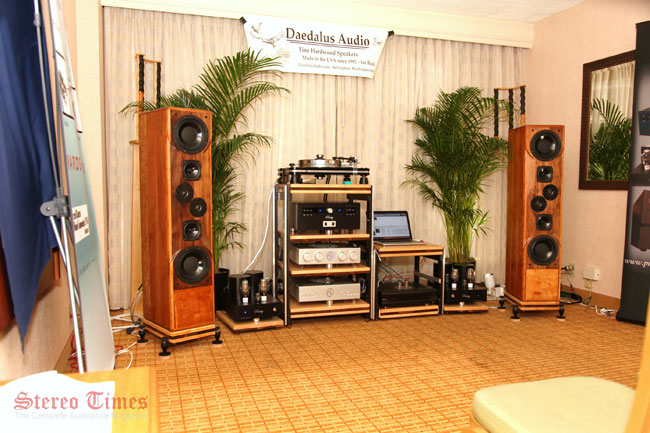
I’m always in awe of the fact I cannot detect nothing but music that comes by way of the Daedalus Ulysses V.2 ($16k) multi-driver loudspeaker. Like the Legacy Audio speakers, I just have a problem staring at multiple drivers thinking I can hear something out of sorts. But I cannot and am not ashamed to admit it. In fact, the Daedalus sound as sensitive to the soft passages of a song as they do when recreating loud dynamic shifts. This was my first time hearing the Purity Audio Design Reference pre and PSE300 mono amp combo ($15k/$22k) sourced through a Modwright Elyse DAC ($7k) using a modified Oppo 105D CD player. The system was wired with Dynamic Design’s new Titiana series cables throughout and our own Bill Wells was quite impressed by the performance of their AC cords ($2,500 – review forthcoming). I left this suite very impressed by the overall ease and delicate flow of the music and the choice of the music selection as well. There’s no denying that there exists a synergy these components provide that even some loftier priced systems here at the show could not match.
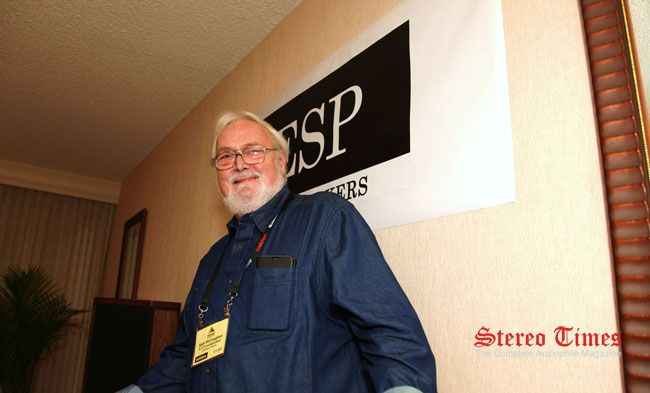
Sean McCaughan of ESP loudspeakers was standing tall at this year’s RMAF.

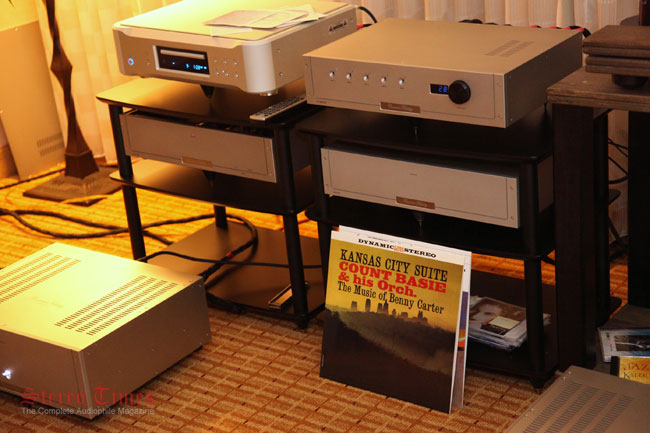
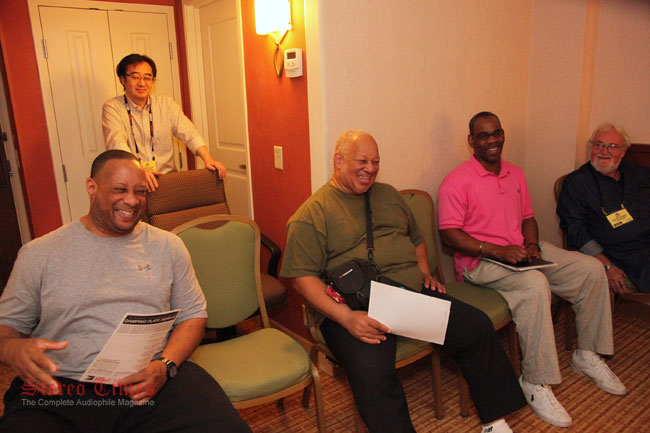
Attempting to explain my fondness for the soundstaging capabilities of ESP loudspeakers would take up too much space. Twenty years ago, as a young snotty-nosed neophyte, I had the luxury of hearing the ESP Harps at the home of audio guru and mentor Bill (The Brass Ear) 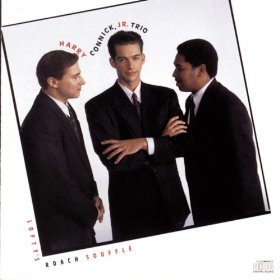 Brassington. I will never forget that chance encounter with these odd-triangle-shaped transducers as I had no idea who ESP was, or what made them special enough for the Brass Ear to pride himself on owning a pair. One listen to Lofty’s Roach Soufflé from Harry Connick Jr’s CD self-titled CD, through a pair of BAT Audio VK-60 tube mono amps and a Levinson digital front-end, was all it took to hear what ESP can do that have become part of their legend 20 years later. The ESP Harp’s virtually left the room in their wake left a soundstage full of energy, magic and pin-point accuracy from left to right of the listening room. After a few hours of listening I became mixed with emotions that ranged from envy, jealousy and happiness. I owned a very nice system too yet, they seemed worlds apart in terms of overall quality. The Brass Ear had me second guessing my choices all the way back home. It took years to find out, but I eventually did come to realize the ESP speakers were responsible for much of the magic I heard that memorable evening. The ESP are transducers of the highest order and take a lot of the guess-work and indecision out of finding a great pair of loudspeakers to call your own. Unfortunately, the hi-fi world doesn’t care much about great loudspeakers as much as it does about the “press and accolades” for a specific brand. How these incredible transducers remain hardly known is still a mystery to me. Especially now, with newly updated enclosures, drivers and crossovers/parts.
Brassington. I will never forget that chance encounter with these odd-triangle-shaped transducers as I had no idea who ESP was, or what made them special enough for the Brass Ear to pride himself on owning a pair. One listen to Lofty’s Roach Soufflé from Harry Connick Jr’s CD self-titled CD, through a pair of BAT Audio VK-60 tube mono amps and a Levinson digital front-end, was all it took to hear what ESP can do that have become part of their legend 20 years later. The ESP Harp’s virtually left the room in their wake left a soundstage full of energy, magic and pin-point accuracy from left to right of the listening room. After a few hours of listening I became mixed with emotions that ranged from envy, jealousy and happiness. I owned a very nice system too yet, they seemed worlds apart in terms of overall quality. The Brass Ear had me second guessing my choices all the way back home. It took years to find out, but I eventually did come to realize the ESP speakers were responsible for much of the magic I heard that memorable evening. The ESP are transducers of the highest order and take a lot of the guess-work and indecision out of finding a great pair of loudspeakers to call your own. Unfortunately, the hi-fi world doesn’t care much about great loudspeakers as much as it does about the “press and accolades” for a specific brand. How these incredible transducers remain hardly known is still a mystery to me. Especially now, with newly updated enclosures, drivers and crossovers/parts.
That being said, my old friends who entered into this room – and never heard the ESP’s prior – earned a new respect for the meaning of “soundstage” and “musicality!” This, after even a brief listen to the new Bodhran SE loudspeakers ($29k), played through a slew of Concert Fidelity electronics and situated nearly on each side wall of this hotel suite. Though they performed superbly in that position, I found the images a little too lightweight for my tastes and asked that they be brought in just a tad closer together (about six inches). This helped create even more tactile, three-dimensional images and also gave the music a tad more intimacy. However, make no mistake, the ESP loudspeakers can hold their center image as good omni-directional transducers – regardless of where you are – due to their off-axis compliment of side-firing drivers (to see the spec chart on the Bodhran SE visit ESP’s website here) is somewhat surprising to first time listeners: and my friends in the photo above are all seasoned music lovers (more so than audiophiles) in their own right, were all amazed. I’m hoping to hear the ESP loudspeakers once again, but next time in the luxury of my own listening room. There’s so much to like about the ESP loudspeakers and personally were the biggest surprise at this year’s RMAF.
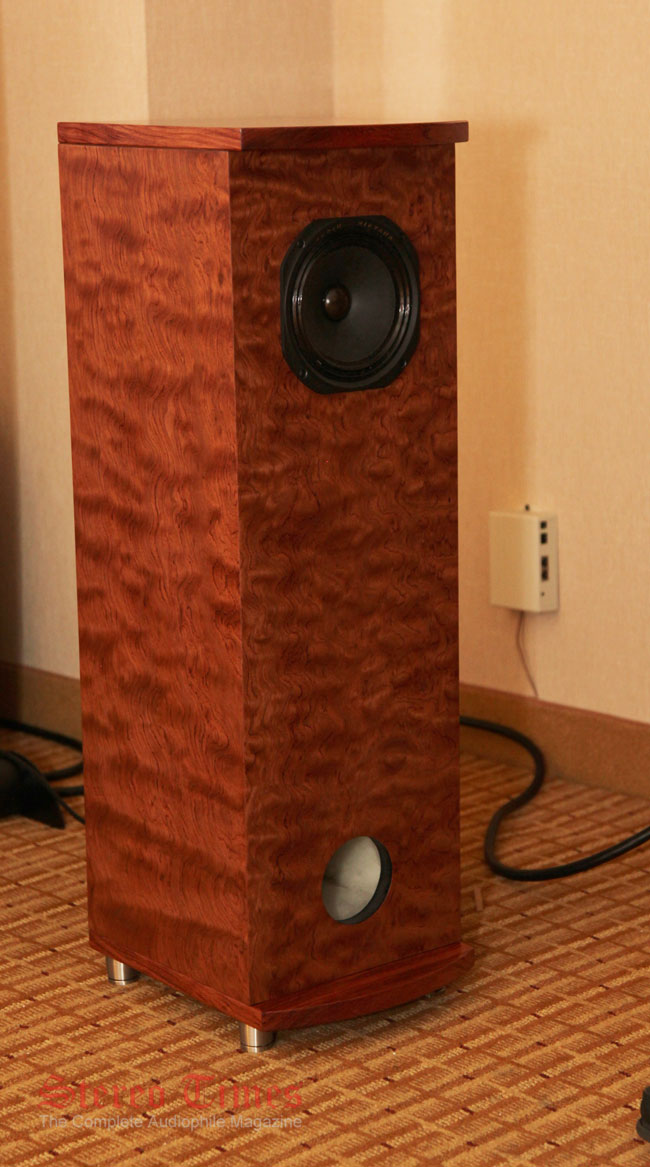
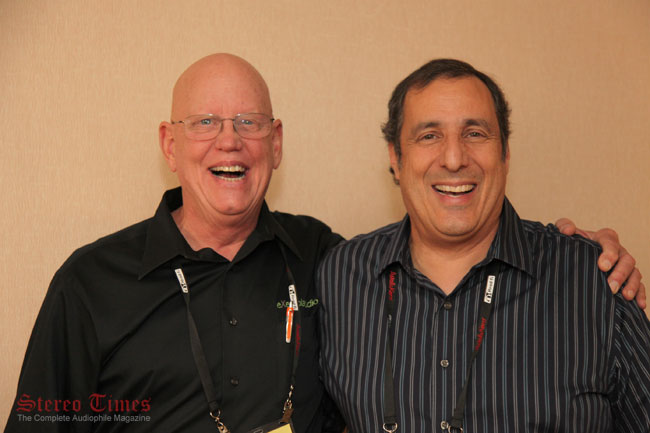
Exemplar Audio’s John Tucker (left) and Stillpoint’s chief Paul Wakeen.
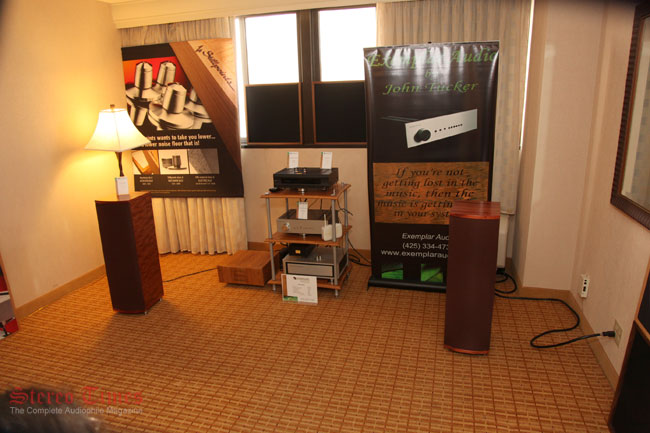
John Tucker of Exemplar Audio’s John Tucker was all smiles as we were enjoying a listening session of his latest invention: the Exemplar Audio XL-II loudspeaker. This handsome floor-stander boasts a single 6.5″ full-range coax driver folks and a retail asking price of only $5,500. “Smooth” and “coherency” were the catch words echoing around the room that afternoon. An Exemplar Audio tube-modified Oppo 105D CD player and integrated amp completed the system. All cabling was by way of Exemplar Audio as well. That being said, what appeared hidden in plain sight was the Entreq Poseidon Passive Grounding system which is imported by Stillpoints USA. All I can say is I have been evaluating these products over the past few months and have concluded they are as serious a tweak as I know of. In fact, I would place their value on par with upgrading or perhaps even changing out an amplifier, preamp or CD player. I am in awe of these passive devices and will reveal my experiences in detail in the coming weeks. Stay tuned!
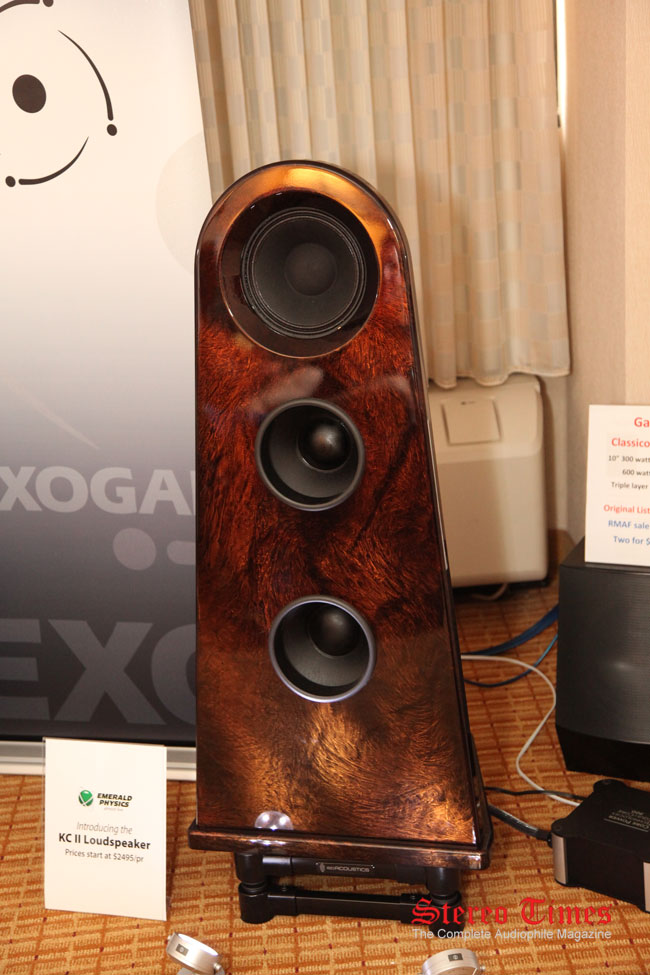
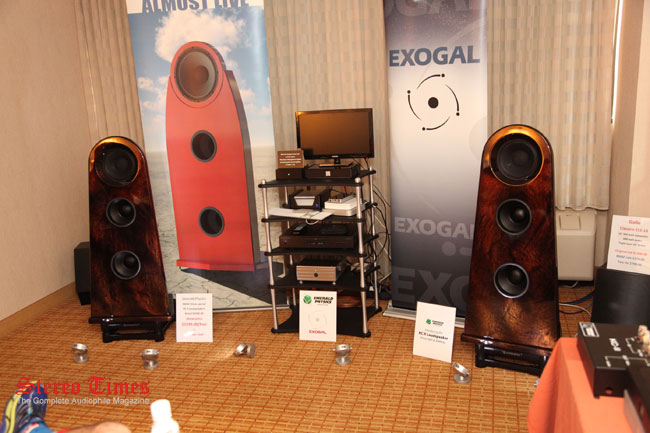
Casually stepping into the Underwood Hifi suite to hear the open-baffle Emerald Physics KCII ($2500) was like taking a nostalgic walk back into the early ’90s when products were far more reasonably-priced and less frightening to ask “how much?” Underwood Hifi and Emerald Physics is owned and operated by Walter Leidermann and partner Mark Schifter (formally of Audio Alchemy). In addition to designing affordable loudspeakers Leidermann also makes great sounding electronics like the EP 100.2 SE stereo amplifier we recently reviewed alongside the Emerald Physics 4.7’s (read latest review here). In addition to the cables, preamps, DACs and DSP-based crossovers available, the company has also just released the Equi=Core (models 50/150/300) Balanced Power Cable system that our own Greg Voth appears quite enthusiastic over. What I so admired about this room in addition to its overall solid performance was the asking price of the entire rig ($7,000.00). It’s hard to fathom a system at this asking price and that includes the loudspeakers, amplifier and DSP-crossover. What’s harder to fathom is attempting to justify how a product can cost many times its asking price but barely perform as good. There’s a lot to consider when you hear this loudspeaker system at $2,500 and conclude, they can box way outside their weight. And if you desire to spend more money then I recommend hearing the model 4.7s. Our admiration for this boxless, DSP’d transducer grew even fonder upon further examination with the EP 100.2 stereo amplifier.
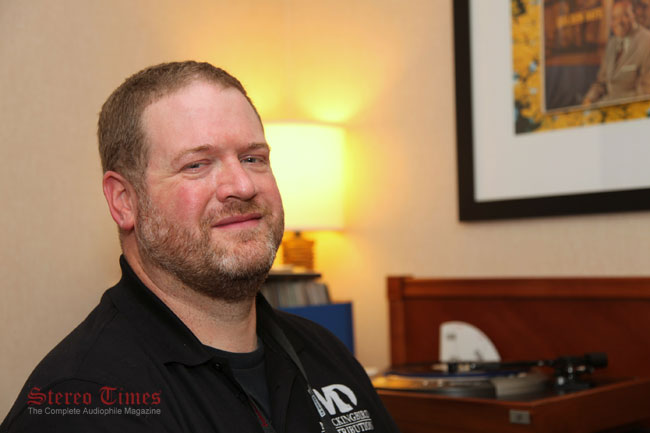
Phillip Holmes, of Mockingbird Distribution had one of the most affordable and sweetsounding systems at this year’s RMAF!
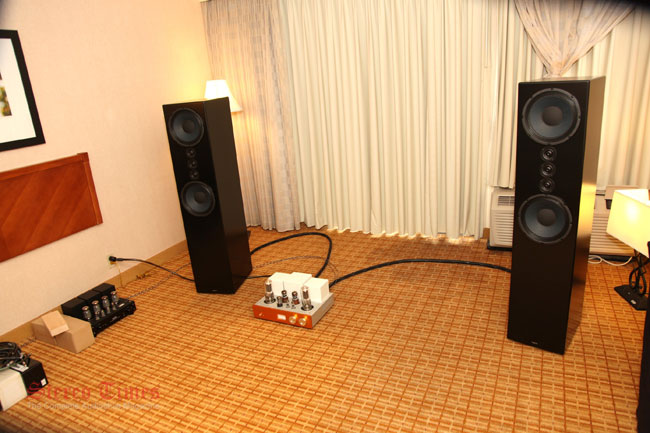
Walked into Mockingbird Distribution’s suite, where I met company owner Philip Holmes (photo above). I calmly sat and listened to this system via a hot rodded Denon turntable using an Abis SA-1 tonearm, and whispered “nice sounding system you’ve got here. What’s the price of these loudspeakers?” “Twenty-two-fifty” Holmes responded “Not bad, for $22,500” I replied. “No, two-thousand, two-hundred and fifty dollars” he remarked. All I could say was “HUH??” “These are Tekton Design loudspeakers” he whispered. “OHHHHHHH, now I finally hear what Frank Alles and David Abramson were excited about in their high praise reviews of Tekton Design loudspeakers: these are some really excellent sounding loudspeakers despite their “affordable” sticker price. The Tekton Design Pendragon, which represents the company’s reference floorstander are perhaps the most inexpensive I have seen thus far at this show. And if my memory serves me right, I doubt I have ever seen a floorstander boasting dual 10″ drivers, (3) ring radiating high-frequency drivers and sport a 95dB sensitivity rating at only $2,250 PER PAIR (and they come with free shipping anywhere in the USA!).

How Tekton Design’s Eric Alexander keeps his prices this affordable and excellent sounding is a mystery that should be shared with the rest of this industry. Alexander seems quite happy and hasn’t any plans on changing despite the increase in exposure and sales. Bravo!
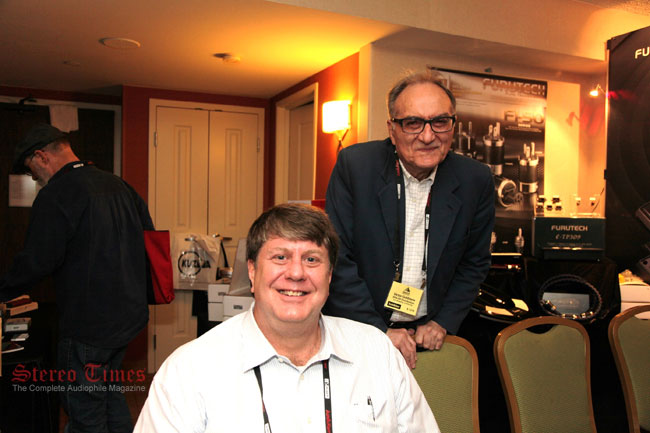
Audio legend Scot Markwell of Elite AV Distribution (left) and importer extraordinaire Victor Goldstein of Fanfare International.
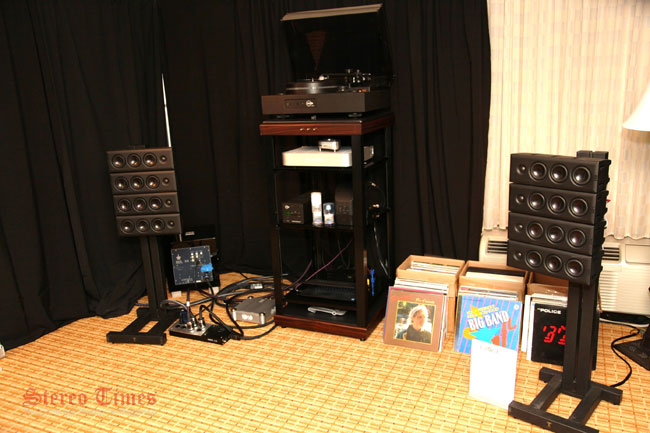
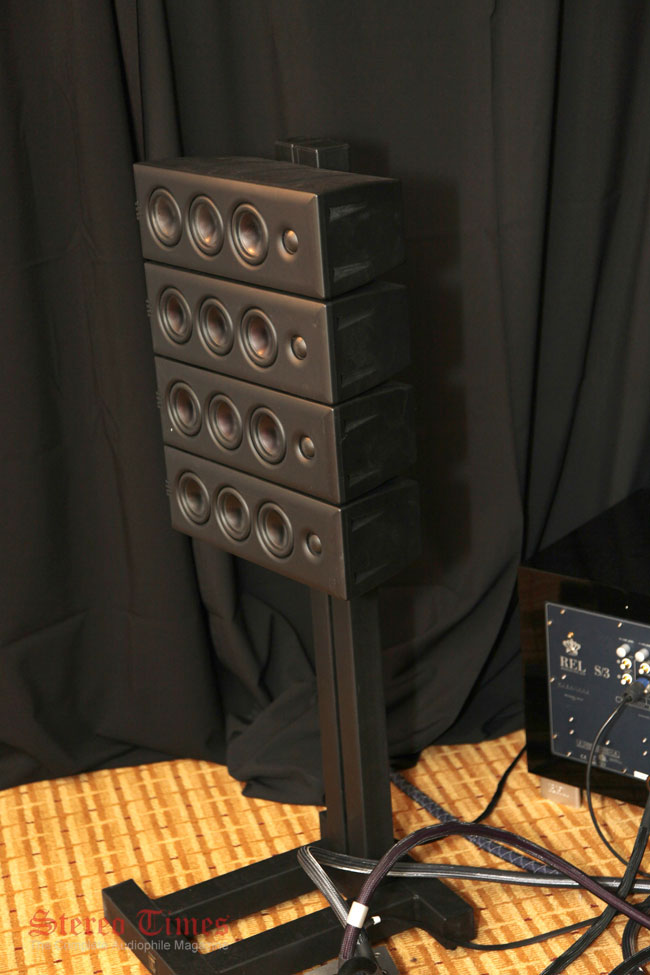
You may, or may not be aware that Scot Markwell was a long-time setup man for the late, great Harry Pearson. What you also may or may not know is that HP was quite the discerning listener and I am certain this gave Markwell fits. The good news is some of this has obviously rubbed off Markwell who now sells high-end wares through his own company Elite AV Distribution. For example, the HRT Stage loudspeaker system, which includes an amp and internal DAC, retails for a mere $999.00. However, leave it to Markwell to take matters into his own hands. Markwell had some speaker stands made to order by Sound Anchors for which he stacked four pair of HRT loudspeakers and ran them in series using Furutech cables throughout. Markwell contends the HRTs are capable of all the way down to 40Hz before a pair of REL S3 subs kick in for added low-end measure. Using a Kuzma Stabi M turntable ($20k), Kuzma 4Point arm ($6675) and CAR-30 MC cartridge ($2250) as the source, I was surprised at how easy these multiple drivers formed one cohesive wall of sound that was both musically rewarding and more dynamic than I would have imagined. As impressive as this system sounded I couldn’t believe the asking price, minus the Kuzma ‘table, was less than $6k including the amplifiers! We have a review request already out on the HRT system and hope to report our findings in the not too distant future.

The esteemed audio designer Peter Madnick is back at Audio Alchemy!
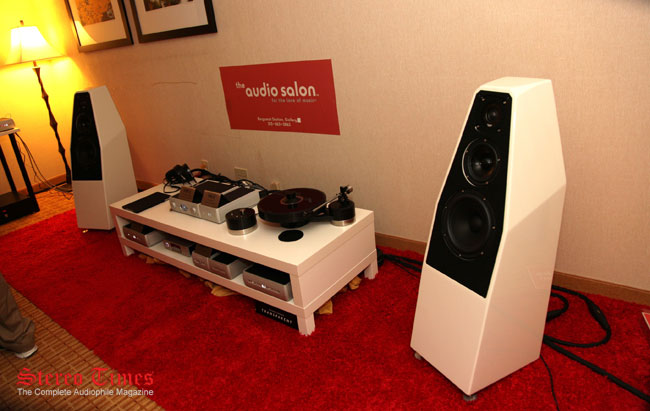

Audio Alchemy is back and their products, like the DDP-1 Digital Decoding Preamp ($1995) and DPA-1 Digital Power Stereo amplifier ($1995) looks and sounds better than ever. Listening to this system through a pair of Wilson Audio Sabrina loudspeakers ($15,900), the Wilson brand was not ashamed to be handled by these embarrassingly affordable products. In fact, it was somewhat of a surprise to hear how actually dynamic, warm, yet detailed this system performed. Way beyond what I would have expected and easily one of the most surprising rooms I visited at the show this year.
I was relieved to have discovered such wonderful sound from affordably priced systems at this year’s RMAF. Maybe this trend will continue and others will join in. Maybe we’ll see manufacturers boasting less expensive products and boasting its performance/price ratio instead of its price – and assumed performance – based on that number. I’m so proud to know that if one of my friends or relatives wants to get into the hobby that I might be able to point them in the right direction rather than shy them away because of the hobby’s outrageously priced entry fee. And for that alone I am glad I attended this year’s RMAF!

Stereo Times Masthead
Publisher/Founder
Clement Perry
Editor
Dave Thomas
Senior Editors
Frank Alles, Mike Girardi, Key Kim, Russell Lichter, Terry London, Moreno Mitchell, Paul Szabady, Bill Wells, Mike Wright, Stephen Yan, and Rob Dockery
Current Contributors
David Abramson, Tim Barrall, Dave Allison, Ron Cook, Lewis Dardick, Dan Secula, Don Shaulis, Greg Simmons, Eric Teh, Greg Voth, Richard Willie, Ed Van Winkle, and Rob Dockery
Music Reviewers:
Carlos Sanchez, John Jonczyk, John Sprung and Russell Lichter
Site Management Clement Perry
Ad Designer: Martin Perry





Be the first to comment on: RMAF 2015 Page 3